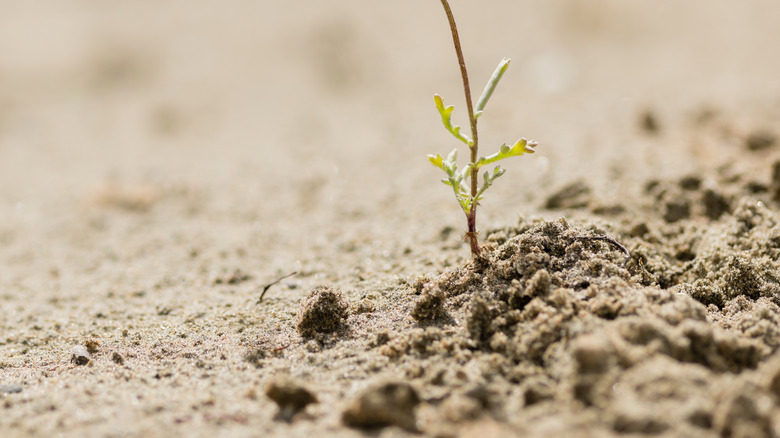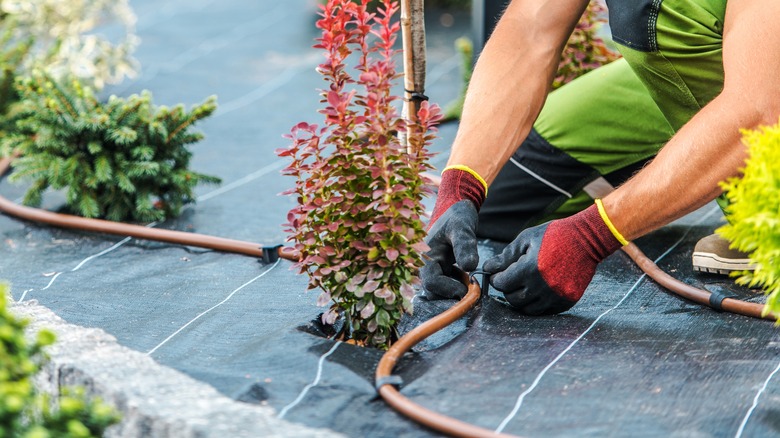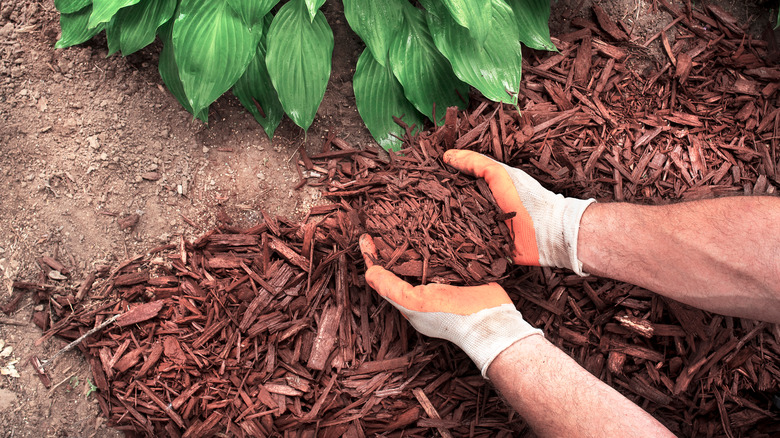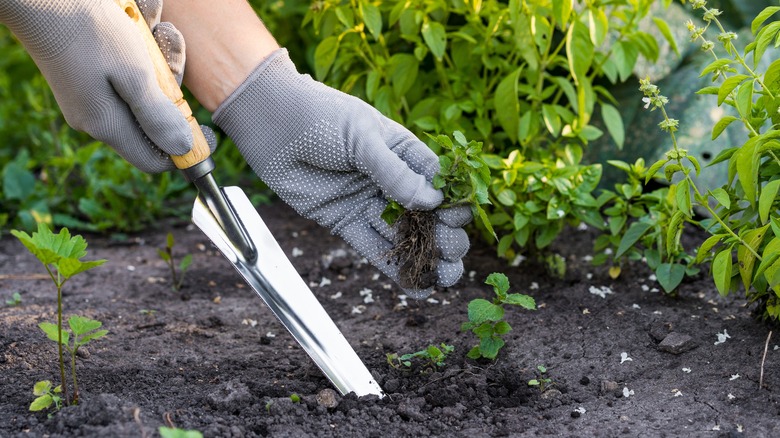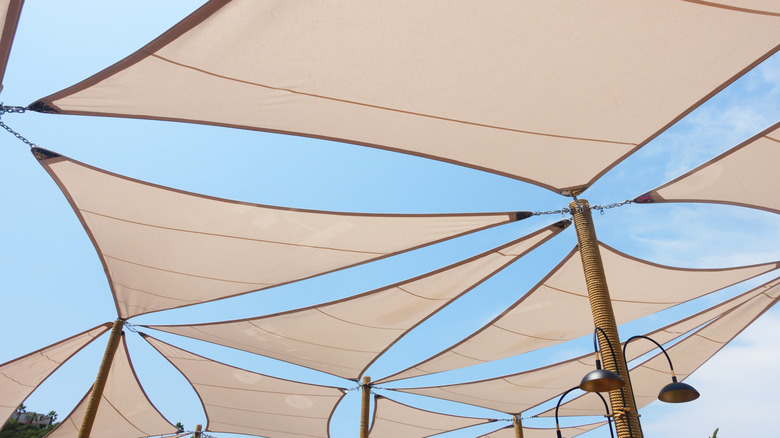Help Your Flower Garden Survive During A Heat Wave With These Tips & Tricks
Anyone who's fought tooth and watering can to keep beets, cilantro, or broccoli from bolting knows too well the effect of heat on plant flowering. Research has repeatedly shown that the start and duration of flowering is affected by ambient temperature. Normal temperature ranges can promote plant health, but temperatures higher than normal overall can cause plants to shift from vegetative to flowering phases and actually be less productive overall. Heat can also make some plants stop flowering altogether. In general, perennials hold up better to heat waves, but some annual flowers, like zinnia, vinca, salvia, and lantana, also fare well. But overall, flowers are very susceptible to stressors like unusual temperature patterns.
Your first line of defense is to start with healthy plants in healthy soil. Keeping the soil loose as deep as you can and using lots of compost or other high-quality organic fertilizers will promote healthy root systems. Better roots mean that plants can use nutrients more efficiently and deal with drought, heat, and pests better too. Once the heat wave is underway, though, start breaking the usual rules. Skip fertilizing, because plants are likely to pause their absorption of nutrients, and a buildup of fertilizer can damage them. And temporarily stop other ordinary activities that can add stress to an already stressed plant, like pruning and transplanting.
Water carefully
Watering is obviously very important in a heat wave, when plants demand more of it, but it's just as important that you do it right. Water deeply to forestall evaporation and promote root growth. Keeping the full depth moist will stabilize soil temperature. Water when it's cool in the morning to prepare plants for the hot day ahead. If the soil is dry, use a slow-then-fast method of first moistening the soil, letting it sit for a bit, and then soaking deeply.
Your goal is to water the root zone, not the foliage, since water droplets on a hot day can scald plants. Consider options like drip irrigation, which loses less water to wind and evaporation. Such watering techniques also help you avoid garden pests, an important advantage during heat and drought conditions.
Take care not to over-water. Soil that's too wet can damage roots and drown some plants. Use your finger to test the soil to determine if the soil is wet enough based on the individual plants in the area. Take care to keep the soil of seedlings, new transplants, and container plants consistently moist. For established plants, water every two to three days. And don't let any soil get completely dry. Finally, if you know a heat wave is coming in a few days, start the new watering regime right away to best prepare your plants.
Mulch well
Once you've got the protective water there, you want to keep it there. The best way to do it, of course, is judicious mulching. A 1-to-2-inch layer of composted organic mulch will slow evaporation, reduce runoff, reduce water use, and regulate soil temperatures in the root zone, where they matter most. You might use more of a lightweight mulch, but avoid over-mulching, which can soak up water that was meant for your plants.
Mulching protects shallow-rooted plants the most, of course, so take care to protect your azaleas, hydrangeas, gardenias, and the like. Mulch over your irrigation system components as well, to reduce unnecessary heating of the water you plan to deliver to your plants. Keep mulch away from direct contact with plant stems and tree trunks.
Your mulch doesn't have to be actual mulch, it turns out. Living mulches and ground covers can also do a fantastic job of helping with moisture retention, temperature regulation, and just plain looking great. Sedum, moss phlox, blue fescue, lesser periwinkle, dwarf white clover, and other ground covers add beauty and protection to your flower beds. Plants like African marigold, chamomile, calendula, and crimson clover not only have productive lives of their own but can also function as living mulch and later as nutrient-rich "chop-and-drop" mulch. And mulch, living or otherwise, has one more quality that's particularly relevant to dealing with heat waves: weed control.
Get weeds under control
The concept of a "weed" is a dubious one, objectively speaking, but when unwanted plants are stealing water and nutrition from your flowers in the middle of a heat wave, it's fair enough to call 'em weeds ... and to deal with them as such. This is a time when your flowers can least afford the theft, stressed as they already are. Weeds can definitionally out-compete your flowers for these resources, and they often thrive while your ornamentals are dropping flowers because of the heat. The same reasoning applies to getting ahead of garden pests that can ravage your flowers.
You can, of course, use densely packed ornamentals as a planting technique to make weeds a thing of the past, and while it probably won't improve your water requirements, the water will at least be used by desirable plants.
Weeding during a heat wave doesn't sound like a lot of fun, and it isn't. Avoid it as much as you can by preparing in advance. Use mulch, as mentioned above, and remember to disturb the mulch as little as possible if you want to keep weeds from growing in your flower beds. And use whatever other fabric or paper products you see fit for the purpose. Weed in the morning before it gets unbearably hot, and perhaps most importantly, get a jump on the heat wave by doing as much weeding as you can before it starts in earnest.
Move what you can, and shade what you can't
There's one more way to improve your flowers' environment during a heat wave: Change it up. Find a new home for mobile plants, like container-grown ornamentals and seedling trays — something shadier, or perhaps indoors. Even heat- and drought-tolerant, zone-appropriate flowers will suffer (or worse) as seedlings or in pots, where soil moisture is practically impossible to manage. Put large container plants on rollers so you can move them easily as the heat sets in. But many plants that are in the ground will also be vulnerable, and, except for perhaps the occasional sentimental ornamental, you're probably not going to physically relocate a lot of those.
In cases like that, bring the shade to your plants rather than your plants to the shade. What version of this approach you use will depend on the structure and placement of your garden, and the options are all but limitless. You can cover your plants with hoops or create shade panels or "sails" that protect during the hottest part of the day. Structure can be provided by everything from PVC pipe to bamboo to clotheslines.
Because ornamentals require 70% to 90% shading during a heat wave, your best bet for the actual shade material is probably shade cloth canopies, such as from Home Depot, but these can get pricey fast if you have a large garden. Alternatives include bed sheets, umbrellas, landscaping cloth, and more ... even the woven underlayment that goes under roads and driveways.
